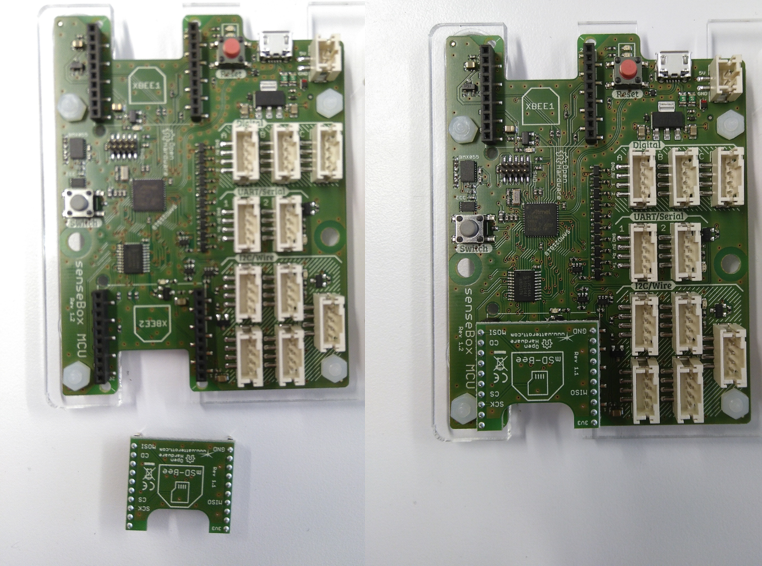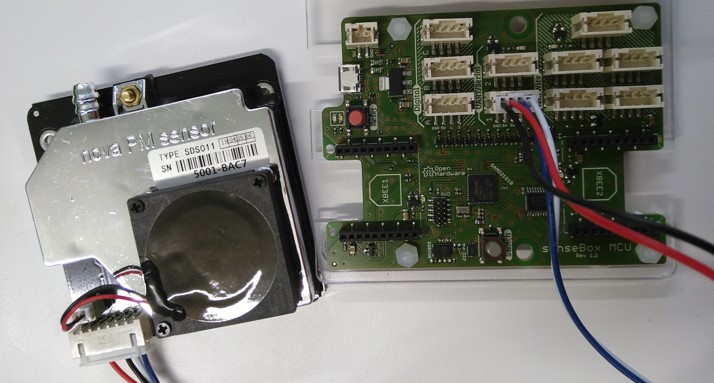Step 3: Connecting and Wiring
Connection of Bees
The connection of the Bees is very simple. Through the plug-in system, it is sufficient to put the Bee directly on the microcontroller. There are only two things to consider: 1. The orientation on the board and 2. The correct port connection on the microcontroller.
WiFi Bee, Ethernet Bee and LoRa Bee
These Bees are all attached to port 1. The correct port can be recognized by the caption: XBEE1. The correct direction when plugging you can tell by the 7-sided marking on the board and the Bee.

mSD-Bee
The SD-Bee is attached to port 2, which is enabled by default. The correct port can be recognized by the caption: XBEE2. The correct direction when plugging you can tell by the 7-sided marking on the board and the Bee.

Connection of Simple Sensors
The sensors that can be purchased with the senseBox are very easy to connect with the enclosed "I2C to I2C" cables. For this you need to use the slots on the board marked with I2C/Wire.

Connection of the Fine Dust Sensor
The fine dust sensor that can be purchased with the senseBox has an enclosed matching cable which can connect the sensor to the board. For this you need to use the slots on the board marked UART/Serial. You can find further information about the connection of the particulate matter sensor
here.
